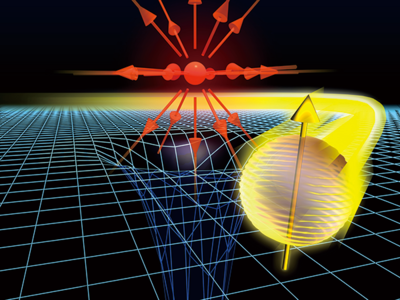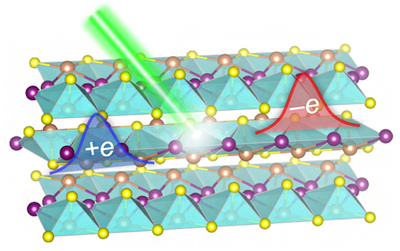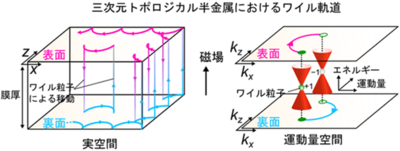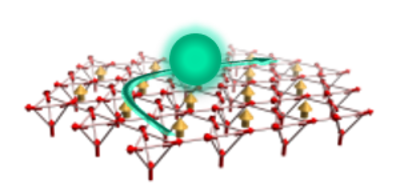Research
- Quantum Phase Control
- Advanced Materials Research
- Materials Science using Quantum Beams
- Optical Spintronics
- Quantum Material Thin Film Devices
- Theoretical Materials Design
- Controlling the Wave-like Properties of Electrons
Advanced Materials Research
Quantum transport in electron high mobility magnetic semiconductors

Magnetic semiconductors are strong candidate materials for future spintronics applications. However, most of the typical magnetic semiconductors exhibit low carrier mobility due to impurity scattering from magnetic dopants, which has prevented the emergence of quantum transport phenomena. We have developed a unique molecular beam epitaxy growth system, which is characterized by organic gas precursors and laser substrate heating, to overcome this issue and realize a spin-polarized high mobility carrier. We eventually materialize high-quality EuTiO3 thin films with carrier mobility as high as 3,200 cm2V-1s-1 at a lower temperature, where Shubnikov de Haas oscillation in longitudinal resistivity and anomalous Hall effect originating from Weyl nodes in momentum space are observed.
Robust photocurrent driven by quantum phase in ferroelectrics

Ordinary electric current is carried by an electron flow, and it is destined to be energetically dissipative because of electron scattering. On the other hand, recently developing “topological current” arises from a quantum phase of the wave function of electrons, and it is supposed to be dissipationless. When we shed light on materials without inversion symmetry such as ferroelectrics, it is well known that so-called photocurrent spontaneously emerges. Recent advances in theoretical studies shed light on this phenomenon and endow novel interpretation in the context of the topological current. We have examined a relationship between the density of crystal defects and photocurrent in ferroelectric SbSI and have confirmed that photocurrent is indeed topological current. Also, we have successfully fabricated SbSI thin films ordered along the polarization axis for future applications.
Observation of a unique non-local quantum electron transport: Weyl orbit

Topological matter is a unique class of materials, hosting dissipationless quantum current originating from topologically non-trivial electronic states. Especially in topological semimetals, it has been proposed a realization of “Weyl orbit” connecting bulk Weyl Fermion and surface Fermi arc states. We have fabricated a dual-gate field-effect transistor on a typical topological semimetal Cd3As2 to independently modulate carrier densities of top and bottom surfaces. As a result, we have observed a characteristic quantum Hall effect from the surface state and confirmed the existence of Weyl orbit in Cd3As2.
Exploration of novel magnetic conducting oxides

Many oxides show characteristic magnetic properties such as a noncoplanar spin configuration in addition to simple ferromagnetism and anti-ferromagnetism. We study the interaction between conducting electrons with magnetic moments in such materials to seek emergent magnetotransport phenomena exemplified by the topological Hall effect. Recently, we have succeeded in stabilizing metastable perovskite ruthenates, PbRuO3 and (Pb,Sr)RuO3, which cannot be obtained as a single crystalline bulk form. In addition, we have clarified the evolution of magnetism in these compounds through magnetotransport measurements.